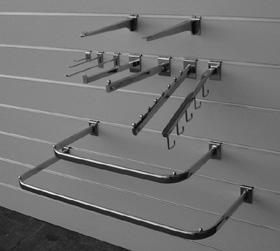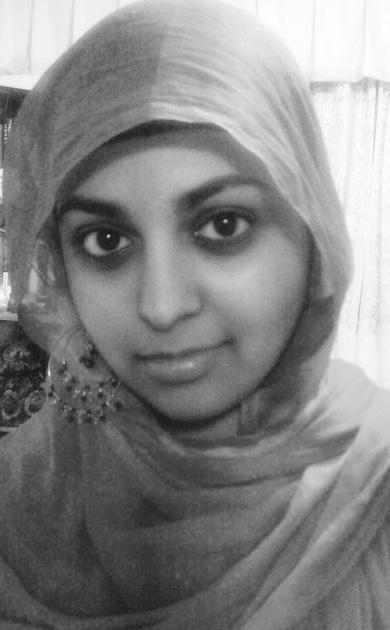
14 minute read
A simple solution to abolishing poverty
from 2010-03 Sydney (1)
by Indian Link


Prof. Muhammad Yunus encourages us to rethink credit, lending, and most of all, the reason to do business
BY SHAFEEN MUSTAQ

Who would have thought that one of the most charismatic speakers of our times is a simple, humble and effervescent Economics professor, from one of the smallest countries in the world? When Prof. Muhammad Yunus enters the room there is a collective hush, a palpable lifting of spirits and an undercurrent of excitement. It feels like one is in the presence of genius, of a man who single-handedly revolutionised the way we think about credit. A man who put his money (and a lot more besides) towards bettering humanity.
I had the good fortune to meet Prof. Yunus twice, and each time I was inspired by his simple and rational call to action. The first meeting was in Grameen Bank in Dhaka, Bangladesh while conducting research for my thesis in June 2009. The second was at his lecture in Sydney on March 8.
Prof. Muhammad Yunus was in Sydney and Sydney Peace Foundation which made him the inaugural recipient of their Peace Prize in 1998... eight years before the penny dropped in Oslo!

Prof. Yunus’ lecture was aptly titled, ‘Abolishing poverty – the human rights priority’ and he presented to a packed theatre at the Wesley Mission Centre in Sydney’s CBD. A hall full of people (two babies included) listened in pin drop silence as the man himself recounted the humble beginnings of his Grameen Bank. Prof. Yunus is an Economics professor, a banker, a managing director, but most importantly, he is a motivator. He motivated a small group of women with a loan of 24USD and thus began the Grameen story. He motivated women in rural villages in Bangladesh and empowered them to live better, healthier and more fulfilled lives for themselves and their children. And now, Prof. Yunus is motivating individuals all around the globe to rethink credit, lending and most of all, rethink the reason to do business.
We can do business to make a profit, he notes; it feeds the inherent selfishness in man to protect himself and his family. But where has this taken us? In the wake of the global financial crisis in which everyone is rethinking the way we conduct our financial transactions, Prof. Yunus is introducing the idea of social business, stemming from the inherent selflessness also in mankind. “The impulsive tendency humans have to help those in need could be put to good use in business”, he expounded. He spoke passionately, logically and most of all, practically, about the social business phenomena and how it can be implemented to bring about lasting change and abolish poverty.
Prof. Yunus gave the example of Grameen’s partnerships in social business: with Danone to make yoghurt for children suffering from malnutrition; with Veolia water to provide clean drinking water in the villages; and with Adidas shoes to provide footwear for under US $1 with the aim of preventing diseases such as hookworm. These partnerships yield profits which are invested back into the company and do not go to
“The success of a social business is in the extent that it helps others and not in the net profit,” emphasised Prof. Yunus. “A social business asks, how many children have been cured of malnutrition with our micronutrient-enriched yoghurt, as opposed to how much money have we made.”
It all sounds so simple and so real. And there he after walking the walk. A rare sight
Prof. Yunus is a man who dares to believe in the power of individual ability. He has defied conventional banking practices and gave microcredit to women. And now he’s defying the age-old reality of poverty through his insistence that we, in our clamour for money and selfish business interests, have stolen the human rights of others and condemned them to poverty. Prof. Yunus emphatically stated that no individual is lacking, no individual is condemned to poverty. It is our denial of human rights that has led to a state of poverty for some individuals over others. And it is now our individual and collective responsibility to ensure that we strip away the fear and hesitation imposed by a sustained state of poverty, and empower those less fortunate with their due human rights. In doing so, we can abolish poverty worldwide.
Prof. Yunus makes this claim with calm and rationality, and it really does seem like a reality, rather than a possibility.
For a man who has accomplished so much, Prof. Yunus is overwhelmingly humble in his dress (he wears only Grameen check, woven and manufactured by Grameen workers) and manner. His clear and confident voice carries and reverberates in my mind long after the lecture has ended. His emphasis that individual action can bring about sustained change is evident in his own achievements.
As I leave the auditorium, I believe in the power of individual action and am inspired once again to be a catalyst of change. And I believe that a world sans poverty can indeed be a reality.




Minister Sachin wants to ‘Pilot’ IT revolution in northeast
The government has begun an ambitious programme to wire up the entire northeast and remote border regions with telecom, wimax and broadband connectivity and unleash an IT revolution in the region, says Minister of State for IT and Communications Sachin Pilot.
“I believe that the northeast can become a big centre for attracting investments from the private sector - in business process outsourcing (BPOs), knowledge process outsourcing,” Pilot, 32 said during an exclusive interaction at the IANS office.
“Young people there have a lot of talent and are easier to train and impart skills to for this kind of work. If we can have rural BPOs then I am sure we can have BPOs in the northeast,” he added.
A bulk of the money under what is called universal service obligation fund, collected by the government from private players to meet the demands of rural connectivity, will be deployed in the northeast, he said.
At the start of this fiscal, more than Rs.18,000 crore ($3.6 billion) was available under this fund.
On a mission to do a “lot more” in the northeast that “has not been done so far”, Pilot said Assam, for example, will see optical fibre cables laid across the state - seen as a must for large data transfers required by such service providers.
“We are launching optical fibre cables at the panchayat level in Assam soon. This will be the first state in India to have it,” Pilot said, adding Wimax services had already been unveiled there last month.
“We launched Wimax in Chaygaon, on the outskirts of Guwahati in Assam. It’s a wireless, high speed internet broadband connectivity - such that people living in a radius of 15 kilometres can access the internet easily,” he said.
Moving beyond Assam, Pilot said the government is also planning a software parks project at Itanagar in Arunachal Pradesh, which will be an export-oriented scheme for developing computer software and extending related professional services.
“I have already met the chief minister of Arunachal Pradesh. We are hoping to start this project soon. The state will then have a lot more money from the government of India, which it can’t afford now,” he said.
India’s northeastern region covers the states of Assam, Meghalaya, Manipur, Mizoram, Tripura, Nagaland, Arunachal Pradesh and Sikkim.
Pilot said he is also planning to give the satellite phone facilities to villages in the northeast, which are cut off from others due to their location, along with a muchsubsidised tariff.
“There are some places of Arunachal Pradesh, which are 12,000 feet to 14,000 feet high - no spectrum, no mobile phones. Therefore, besides the paramilitary forces, I am trying to give satellite phones to these villages and reduce the call charges,” he said.
In Sikkim, Pilot said, the IT ministry has helped in the setting up of a small business process unit and launched 3G services through the state-run Bharat Sanchar Nigam Ltd.
“The chief minister of Sikkim wanted to set up a 50-seat unit through an entrepreneur. So, we not only gave them connectivity but also gave it to them at one-fourth the cost. We also launched 3G services there,” the minister said.
“I want that all the states of the northeast to feel as involved in what’s happening in New Delhi and Mumbai in terms of new innovative ideas.”

Delhi Metro makes special arrangements for Commonwealth Delhi Metro said it was making special arrangements to facilitate passengers’ movement at the Jawaharlal Nehru Stadium station during the Commonwealth Games beginning Oct 3.
“We are making special arrangements at the Stadium Metro station from opening of the Games Oct 3 to closing ceremony Oct 14. The station will have five entry and exit structures so that public can access the station easily and extra staircases of much wider width are being provided so that more people can be accommodated easily,” Delhi Metro spokesman Anuj Dayal said recently.
“The staircase width, which is normally 2.4 metres in other stations, will be as much as 4.25 metres at the Stadium Metro station to accommodate the extra rush. There will also be four escalators connecting the concourse with the platform,” he added.
According to Dayal, the station at the stadium can deal with a crowd of 4,000 passengers per minute in peak time and has been designed to accommodate a total traffic flow of 80,000 persons per hour in the platform area of 1,800 sq. metres.
There will be 20 automatic fare collection (AFC) gates instead of eight AFC gates normally provided at most stations.
“The operations department of the DMRC is preparing a special plan and procedure for clearance of commuters who will be coming for the opening and closing ceremony by Metro trains, with high frequency of Metro trains to ensure very fast clearance at the platform to avoid crowding,” he said.
“Volunteers and Sahayaks (helpers) will be posted to assist passengers at all the important points of the station such as the
Continued on page 28

AFC gates, escalators, platforms and entry and exit points where first-time Metro users may face difficulty,” Dayal added.
A special control room will be established at the Stadium Metro station from where public announcements will be controlled and LED signs will be displayed for guidance of passengers. Railings will be installed and there will be extra lighting for good visibility.
The Delhi Metro will provide easy Metro connectivity to 10 out of 11 venues of the Commonwealth Games 2010. These are the Games Village, Jawaharlal Nehru Stadium, Delhi University, Thyagaraj Complex, Siri Fort Sports Complex, National Stadium, Indira Gandhi Sports Complex, Talkotora Indoor Stadium, Yamuna Sports Complex and R.K. Tennis Complex.
Shut 42 terror camps, India tells Pakistan
Defence Minister A.K. Antony asked Pakistan to shut down 42 terrorist camps he said were functioning in its territory if India-Pakistan talks were to succeed.
“Pakistan has not made any serious attempt to disband the camps that are functioning close to Jammu and Kashmir. The decision for bilateral talks has been made consciously and it was not an ad hoc one,” Antony said. “Though there was no breakthrough (in the foreign secretary talks), being a conscious decision the process (of talks) will continue,” he added.
The minister said the central home ministry and the Jammu and Kashmir government had evolved a formula to check infiltration and help terrorists to return to normal life.
“Many have surrendered too. With the conditions becoming normal, there is an increase in tourist arrivals in Kashmir. Attempts for terrorist infiltration are there and the armed forces are maintaining vigil on the border,” he said.
On the US supply of arms to Pakistan, he said Washington should make sure that the weapons were used against Islamist militants on the Afghanistan-Pakistan border and not targeted at India.
He denied that the government had any information that the Chinese were covertly helping Indian Maoists.
“The army will give logistic support to the state police (of Maoist-affected states). Paramilitary forces will be used for training the state police,” said Antony.
He said the acquisition of defence equipments and aircraft had increased considerably in the past five years.
“The process for acquiring the Kiev-class aircraft, Admiral Gorshkov, from Russia is in the final stage,” added Antony.
He said that after the 26/11 Mumbai terror attack, the threat through sea had increased. The armed forces were engaged in coordinated efforts to prevent similar attacks.
“One of the positive aspects is that even fishermen have become alert and are giving valuable tip-offs to the (security) forces,” said Antony.
Ten Pakistani terrorists sneaked into Mumbai in November 2008 by the sea and went on a killing spree over three days. They slaughtered 166 Indians and foreigners.
South Indians were the ancient money bags in Vietnam’s Ho Chi Minh city Vietnam - the bloody stage for a 30-yearwar with France and then the US - was once home to a bustling Hindu settlement devoted to Shiva and Vishnu. Ho Chi Minh City, formerly known as Saigon, was the business hub of the South Indian Chettiyar community that set up money-lending businesses.
“The relation between India and Ho Chi Minh city dates back to more than two centuries when the Chettiyars, the trading community from south India, first came to the city to establish their money lending business. Subsequently, when they flourished, they entered the retail trade and formed a place for themselves in local society. They were followed by several other trading communities and religious groups from India,” writes veteran journalist, scholar and social activist Geetesh Sharma in his new book, Traces of Indian Culture in Vietnam Ties between India and Vietnam date back to more than 2,000 years when Hindu traders from the Bhagalpur region established the ancient Champa kingdom in central Vietnam, Sharma says.
The book, was released by ICCR president Karan Singh in New Delhi recently.
The 77-year-old Kolkata-based writer, who has visited Vietnam 13 times, had been researching the historical ties between the two nations since 1982.
“Vietnam - once a household name in Kolkata made popular by Communist slogans such as ‘tomar naam, amar naam, Vietnam’ (your name, my name is Vietnam) - captured my imagination in the 1970s when I attended demonstrations against the Vietnam war in the city. I realised that Vietnam shared a lot with India - and Bengal,” the writer said.
“The first lot of people who migrated to Vietnam during the first and fourth century AD were temple artisans and traders from Bihar, Bengal and Orissa. Hindu culture is still alive in Vietnam. Several communities of ethnic Cham people in the country speak a tongue that is a phonetic blend of Devanagari and Sanskrit. I also came upon a local theatre troupe which performs a version of Ramayana,” Sharma said.
The Vietnamese adaptation of Ramayana, ‘Ms Sita’, is woven around the lives of local prince Po Liem, a local version of king Rama and his wife Sita.
“The king dies and the crown is passed on to the king’s ex-wife’s son. Liem and Sita are forced to live in the forest. Demon Riep (Ravana) falls under the spell of Sita’s enchanting beauty and forces her to become his wife. Po Liem rescues Sita with the help of General Hanuman,” Sharma said, narrating the story.
But the Vietnamese Ramayana ends with a twist in the tale. Sita refuses to return to the palace with Rama and pledges that she would see him only in death. “She enters the imperial palace to die in Po Liem’s arms”. Sharma has toured 17 ancient Hindu sites across Vietnam.
“Vietnam has at least 200 Hindu temples. Mysol, a Unesco World Heritage Site, alone had 40 temples before the Vietnam war; but bombings reduced their number to 20. The remaining temples have been restored,” he
Sharma also quotes new research to prove that Hindus had settled down along the banks of the Mekong river in southern
“It is an incontrovertible fact that by the time of the establishment of the Hindu Champa kingdom in central Vietnam, a large number of Brahmins, Kshatriyas and traders had settled down in southern parts of Vietnam.
“The Hindu caste hierarchy in Vietnam was free of Shudras. Recent excavations in a large area of the Mekong delta have unearthed relics of Hindu gods and goddesses - mostly Shivalingas and yonis,”
Sharma said the Fu Nan dynasty, the ruling dynasty in the Mekong delta, was established by a Brahmin named Kaundinya from India. “According to a Chinese version, Kaundinya, who came to Vietnam from India via Cambodia, married a local princess Nagi and founded the dynasty. Shiva commanded supreme obeisance among the Hindus followed by Vishnu and the Buddha. Subsequently, the Buddha replaced Shiva,” Sharma said. ***

President buries ‘Time Capsule’ on IIT-K campus
President Pratibha Patil buried a ‘Time Capsule’ on the Indian Institute of Technology-Kanpur (IIT-K) campus on the occasion of its golden jubilee celebrations and also unveiled a nanosatellite developed by the institute.
The capsule, which is made of a special metal, contains pen-drives, chips, images and several other documents related to the landmark achievements of the IIT-K. Lauding the nanosatellite Jugnu’s development team, Patil said it projects the complex nature of tasks that the students there were equipped to handle.
Congratulating IIT-K students and faculty, Patil said that the institute has come a long way in its 50 years of its existence, and also called upon the institute’s students and faculty members to develop such devices that can harness energy in efficient ways with minimal negative impact on the environment.
“It (IIT-K) had made an impact on technical education within the country, while its students through their innovations, have played an important role in India, as well as around the world,” the president said. Jugnu, developed by a team of 50 IIT students, will help in collection of information related to floods, drought and other natural calamities.
According to IIT-K officials, ISRO, after conducting a series of tests, will launch the nanosatellite from the Satish Dhawan Space Centre in Andhra Pradesh.
170,000 Olive Ridley turtles lay eggs in Orissa’s Gahirmatha
At least 170,000 endangered female Olive Ridley turtles have laid their eggs in the protected Gahirmatha sanctuary, a famed nesting site in coastal Orissa, during the past 11 days, an official said recently.
The turtles came ashore from the Bay of Bengal and laid their eggs in the south beach of Nasi Island-2 in Gahirmatha, located in the coastal district of Kendrapada, Divisional Forest Officer P.K. Behera said.
“The turtles began mass nesting on Feb 24 and since then every day large numbers of turtles were arriving for nesting. On March 6 too, about 1,000 turtles nested there,” Behera said in a phone interview from the nesting site.
“All the turtles have nested along a one kilometre-long and 60 meter-wide area of the beach,” he said.
The Gahirmatha sanctuary is one of the world’s largest turtle nesting sites, where more than a half million endangered Olive Ridley turtles nest every year. The turtles arrive and congregate in the shallow coastal waters in October and nest between December and March. Most hatchlings emerge by May.
“Last year around this time at least 180,000 turtles had nested,” Behera said. Conservation measures have helped bring down the turtle casualties this year, he said. Last year, around 2,000 turtle carcasses were found on the beach. This year, so far only 1,700 carcasses have been found, he said. However, Biswajit Mohanty, coordinator of the turtle conservation group Operation Kachhapa, disputed the figure and said the number of turtles found dead this year could be about 5,000.
The state has two other turtle nesting sitesalong the Devi river in Puri district and the Rushikulya river in Ganjam district. Turtles have however not yet begun their mass nesting in those sites, a state wildlife official said.
Like tigers and elephants, the Olive Ridley turtles are protected under Schedule I of the Wildlife Protection Act, 1972. Trapping, killing or selling of this species could result in a maximum of seven years’ imprisonment. In spite of the several protection measures taken by the government, thousands of turtles get killed every year mostly by mechanised trawlers.
***
India assures Sri Lanka support for Tamil resettlement
India assured Sri Lanka of its support in resettling nearly 300,000 Tamil civilians displaced by the civil war in the islandnation and pushed for a political settlement when Foreign Secretary Nirupama Rao called on President Mahinda Rajapaksa in Colombo.
Rao met Rajapaksa over lunch at Janadhipathi Manidiraya and congratulated him on his landslide victory in the Jan 26 presidential polls.
This was the first high-level contact between New Delhi and Colombo since the Sri Lankan presidential polls.
“She expressed India’s willingness to continue assisting Sri Lanka in the resettlement of the IDPs (internally










